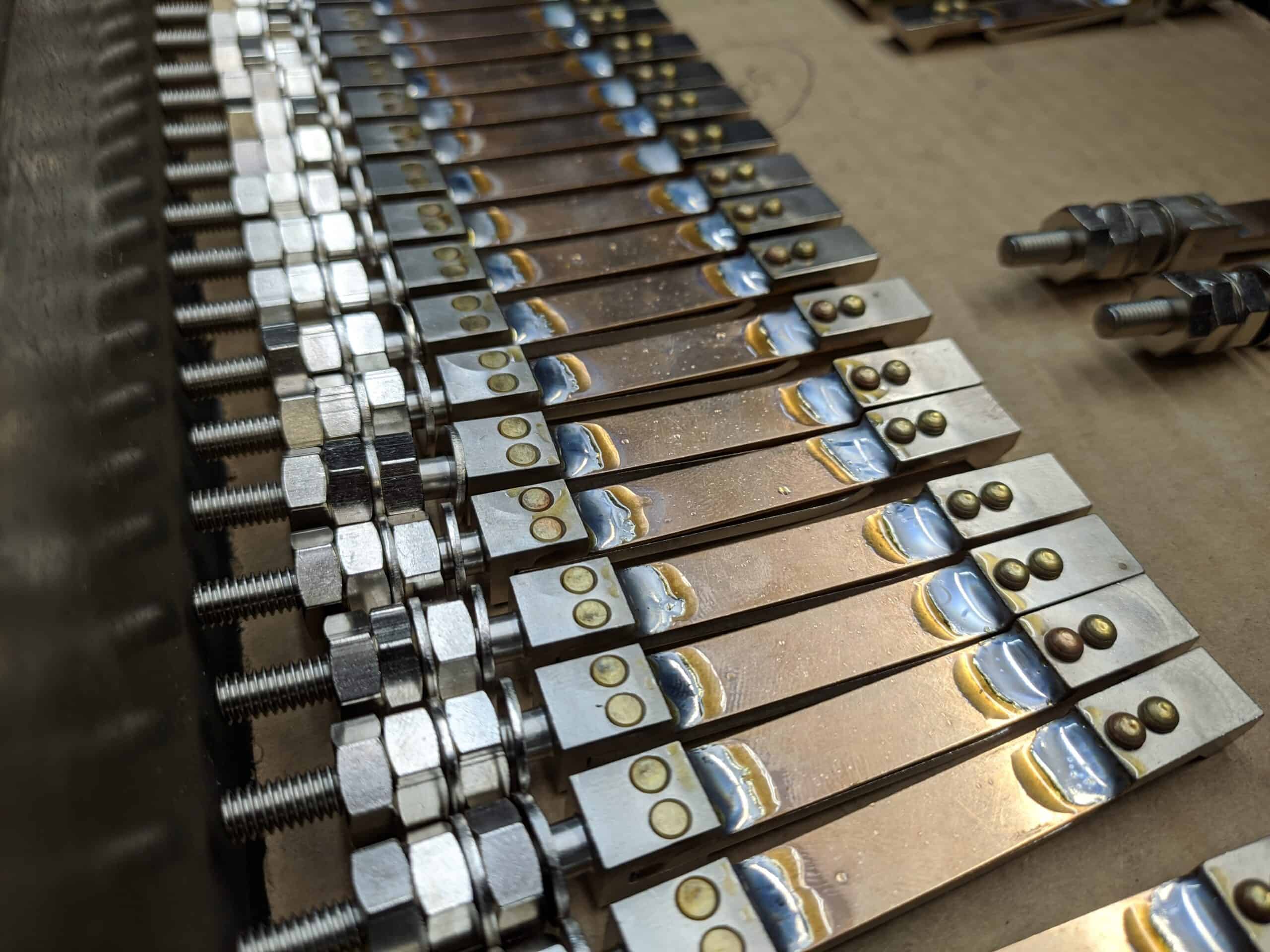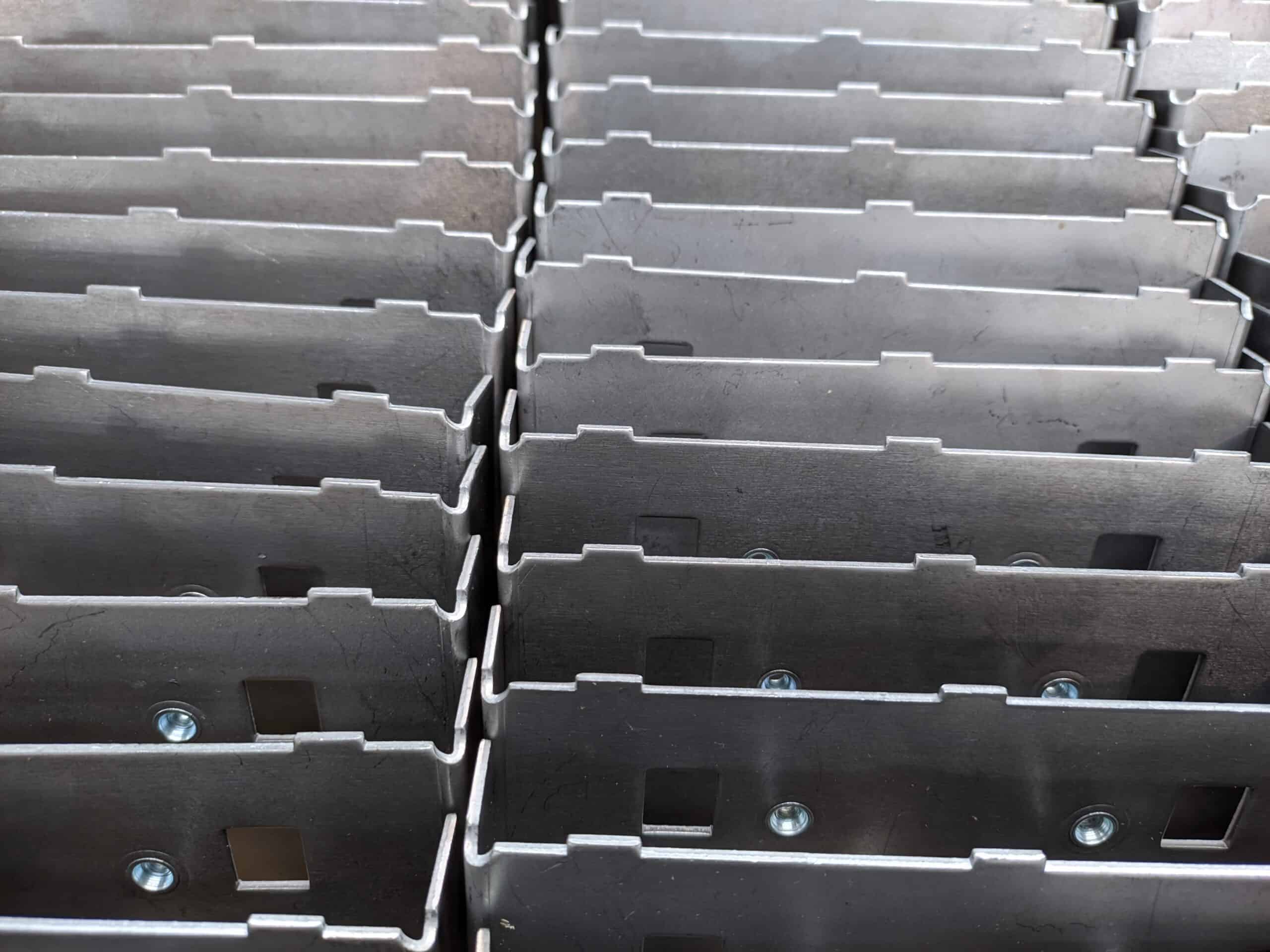Ready to use Components
We are able to help with sub-assembly services, and much much more to deliver a comprehensive component that is made for your unique needs and ready for use right away.
Manufactured to Exact Specifications
We have the tools and techniques to manufacture pressed metal assemblies in all capacities, and the capability to provide high-quality work, whether you are looking for complex components or standard sub-assemblies.
Top-Class Industry Systems
Our in-house designers are the first step in the production process and they have specialist access and experience of using top-class industry systems and technologies, such as CAD systems, solidworks 3D and EDM
Engineered Sub-Assemblies
We are an industry-leading manufacturer of complex sub assemblies, for customers in a variety of sectors including: rail, power generation, electrical, commercial vehicles, engines, thermal technologies, mining and construction.
In addition to providing the standard and bespoke metal pressing, stamping and presswork required for your specific application, our professional services extend to delivering metal assemblies. We can craft assemblies that meet your exact specifications. Our range of sub assembly equipment and processes means that even the most complex components can be produced fully assembled and ready to be used in your parts.
Our high-quality sub-assemblies, which are custom-made to meet the specific requirements of each project can be manufactured with a range of materials, including steel, aluminum, and brass, to create durable sub-assemblies.
We aim to respond to enquiries within 24 hours!
From Concept to Completion
During the production process of metal sub assemblies, we are able to support you with every step of the process from end-to end, but our expert service doesn’t stop there. We are able to help with sub-assembly services, and much much more to deliver a comprehensive component that is made for your unique needs and ready for use right away.
Top Class Industry Systems
Our in-house designers are the first step in the production process and they have specialist access and experience of using top-class industry systems and technologies, such as CAD systems, solidworks 3D and EDM, to not only provide you with expert design, manufacturing and maintenance, but to do so like no other. You can then select a component to suit your needs from either our standard range or you may choose one of our more bespoke designs to suit you.
High Quality Results For Every Project:
We have the tools and techniques to manufacture metal assemblies and in all capacities, and the capability to provide high-quality work, whether you are looking for complex components or standard sub-assemblies. After all, there is a reason that our reputation for engineering excellence precedes us, as the provider of effective sub-assemblies, as a switchgear manufacturer in the UK, and as the best precision engineering company in Birmingham.
STUD & NUT INSERTION
SPIN & ORBITAL RIVETING
BRAZING & WELDING
MECHANICAL DEBURRING
DRILLING & TAPPING
AQUEOUS CLEANING
Delivered on Time and on Budget
Effective capacity planning is one of our top priorities throughout the entire process and our efficient manufacturing control systems enable us to provide a ready-to-use component on time, on budget and to the highest possible standards, regardless of whether you require a small batch or a large production run.
Our core value is to achieve optimum efficiency and effectiveness, which is made easy thanks to the seamless link between our sub assembly and finishing facilities. Our individual metal sub assemblies are made fully compatible before the complete component is delivered to you for use.
FAQ
What Are Sub Assemblies?
A sub-assembly is the production of numerous machined or pressed components destined for integration into a single unit or parent product and these components will form one part of a larger and more complex assembly.
Here at Birmingham Specialities Ltd, we utilise several hand and machine sub assemblies and finishing techniques to ensure metal assemblies of varying materials are of the highest quality. Our team of expert engineers use a number of processes to craft the perfect component, including stud and nut insertion, spin and orbital riveting, brazing and welding, mechanical deburring and drilling and tapping.
Stud and nut insertion in particular is a very cost-effective and efficient manufacturing support solution, which is ideal for the fixing of sheet metal components without the need for fabrication. Stud insertion is an excellent option for parts that don’t suit the welding process or for parts that need to be separated at a later date.
What Is A Switchgear System?
In an electric power system, a switchgear system is composed of electrical disconnect switches, fuses or circuit breakers used to control, protect and isolate electrical equipment. Thus, switchgear systems have two key components:
1) Power-conducting Components
Power-conducting components will conduct or interrupt the power flow. Examples of these include switches, circuit breakers, fuses, isolators, lighting arrestors and relays.
2) Control Systems
Control systems will monitor, protect and control any power-conducting components, such as transformers, associated circuitry, and control panels.
Switchgear systems can be set up to a supply system and depending on the voltage level, they can be seen as low, medium or high voltage switchgear systems.
Materials
We can machine multiple materials depending on your requirements, this ensures that no matter the project, Birmingham Specialities can help bring it to life.









Industries
We provide our range of engineering services to an array of different industries. Applications of our precision components can be found in:
Get a Quote Today!
We can provide you with a quote and lead time based on your specific requirements, and we always enjoy the opportunity to assist.
Or contact us at:





